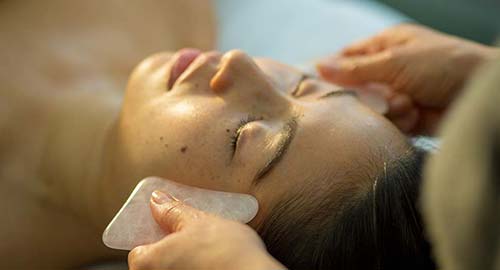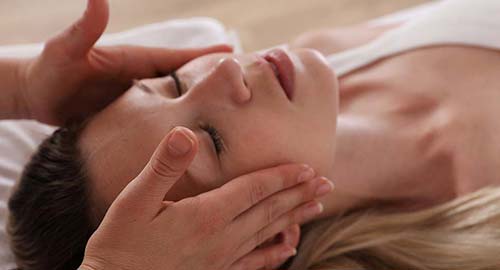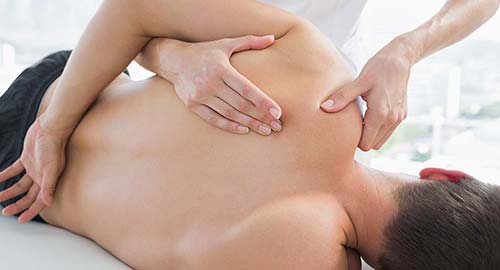
It’s been a month now since we were advised to stay at home and stay safe due to Coronavirus. Whilst we are maintaining social-distancing during this pandemic, unfortunately, our hair is still growing!
I can’t help you with your roots I’m afraid, however, I know what it’s like when you have been waxing for years, the thought of taking a razor to those bad-boys may induce palpitations or send you in to shock!
A few clients have been asking for tips when it comes to waxing at home, so I thought I would write a short blog for you. There are also a couple of videos on my YouTube channel which you can view here.
Just remember that waxing at home is unlikely to be as effective as being waxed by a professional, however, these are unprecedented times and call for unprecedented measures!
Which Product Should I Use to Wax at Home?
Wax Strips
Where to Find Wax Strips
These are readily available online and in the chemist.
How To Prepare Them
You warm them between your hands or on a radiator and then apply to your skin.
Advantages of Wax Strips
The advantages are that they are easy to use, less messy and you don’t have to worry about overheated wax.
Disadvantages of Wax Strips
Disadvantages, I am told, is that hair removal can be a little erratic and you may not get the smooth result you are after.
Wax Pot
Where to Find a Wax Pot
A quick search on your favourite search engine or auction site will bring up a variety of options. They can start as cheaply as £20 and go up to over £100. For home/ occasional use, I would recommend you look to spend about £20-35.
How To Prepare a Wax Pot
Each wax pot and waxing product will come with their own recommendations and guidelines so make sure you follow these.
Advantages of Wax Pots
They heat wax to a constant temperature and so the risk of burning is greatly reduced, as is the risk of too-cool, unspreadable wax causing bruising.
Disadvantages of Wax Pots
There is an initial outlay for something that you might only use occasionally. You will need to have somewhere to store it.
What wax should I use?
There are many waxes on the market. I would suggest using a water-soluble wax so any spills or residue will be easy to clean.
Roll-On Wax
Where to Find Roll-On Wax
These are readily available online and in most chemists. Most that you can purchase easily are designed for home use.
How To Prepare Roll-On Wax
These come with their own heater and extra cartridges are readily available for the product you purchase. You put the cartridge into the heater until the correct temperature is reached and then apply to the skin. The roll on works similarly to the wax pot but without the need for spatulas.
Advantages of Roll-on Wax
This will probably be less messy to apply that wax from a wax pot and the chances of spillage is minimal. Theoretically it should discharge the correct amount of product to the area being waxed so there is less chance of pulling at the skin due to over-think application.
Disadvantages of Roll-on Wax
Again, there is the initial outlay for the equipment and there may not be as much choice. Whilst roll-on wax systems available to the professional produce excellent results, these are quite expensive. If you choose this method, please research reviews prior to making your purchase.
Microwavable Wax
Where to Find Microwavable Wax
These are readily available online or, if you are keen, there are recipes for ‘make your own sugar-wax’.
How To Prepare Microwavable Wax
As the name suggests, you heat this wax in the microwave. This type of wax can reach high temperatures or have hot spots. To prevent hurting yourself when removing, be sure to place it on a microwavable plate so, when you do take it out of the microwave, you are holding the plate, not the pot.
Advantages of Microwavable Wax
You don’t need a wax heater; it is economical to use.
Disadvantages of Microwavable Wax
Microwaves can heat with hot-spots. Ensure that you put wax pot on a microwaveable plate before heating so you can just lift out the plate reducing the risk of burning yourself if the wax has heated irregularly.
Whichever product you choose, please ensure you read, and adhere to, the accompanying instructions.
Before You Begin
A couple of little pointers before we start….
- Ideally, hairs should be at least 5mm in length for ease of removal.
- Waxing just before, or during your period will be more painful than other times of the month.
- Some people say a banana or pain medication an hour before waxing can help with the slight discomfort you may experience, however, I will let you do your own research on this and consult with your GP if you would like to.
Preparing your Skin for Waxing
- Exfoliate
- A day or two before you want to wax, gently exfoliate the area. This will help loosen any ingrown hairs and remove dead skin cells.
- My preferences are gloves or a sisal exfoliating mitt.
- Clean skin
- Oily skin, body lotions, etc can prevent wax adhesion. We also want to minimise the risk of infection, so ensure you always wash the area you are going to wax before starting.
- Mild soap and water is fine, or there are pre-wax products you can purchase if you prefer.
- Dry skin
- Ensure the area is completely dry before applying the wax otherwise it won’t adhere.
Let’s Wax!
Gather everything you need – wax, wax heater, strips for removal. If you purchase a kit, this will come with strips however, you may need more than they provide. Use the internet to search for ‘waxing strips’. I like the bonded strips and these are usually between £2-3 per 100. You will also need after wax lotion or oil which you can purchase online or you can make your own – see aftercare below.
This is a digitally controlled wax-pot
Showing the viscoscity of the heated wax
- You want to apply it in the same way as you butter toast. Ensure the spatula is at approximately 90 degrees to the area being waxed. Apply a thin layer.
- Press down on the wax strip
- Place a wax strip over the wax you just applied to your skin, firmly pressing down. Make sure you keep the grasping tab at the end free from the bottom of the wax so your fingers remain clean when removing.
- Remove the wax strip
- Grab the end of your wax strip (the little tab you left), and yank it back on itself, staying as close to the area being waxed as possible, in one swift movement.
- Tweezers
- If any hairs are left, you can remove these with tweezers by grasping and pulling in the direction of the hair growth.
If you’d like to follow along with me, check out my waxing videos for legs.
Aftercare
If your kit didn’t include any aftercare, there are plenty of wax aftercare products that will soothe the skin and are also mildly antibacterial available on the market. Alternatively, you could mix up a 1% aromatherapy solution of 15ml oil at 2-3 drops of tea-tree or lavender essential oils.
Final Words
Finally, it leaves me to say GOOD LUCK if you venture down this route.
Remember I am happy to answer any questions you may have! Please email me at lorraine@kentbeautyandmassage.co.uk







